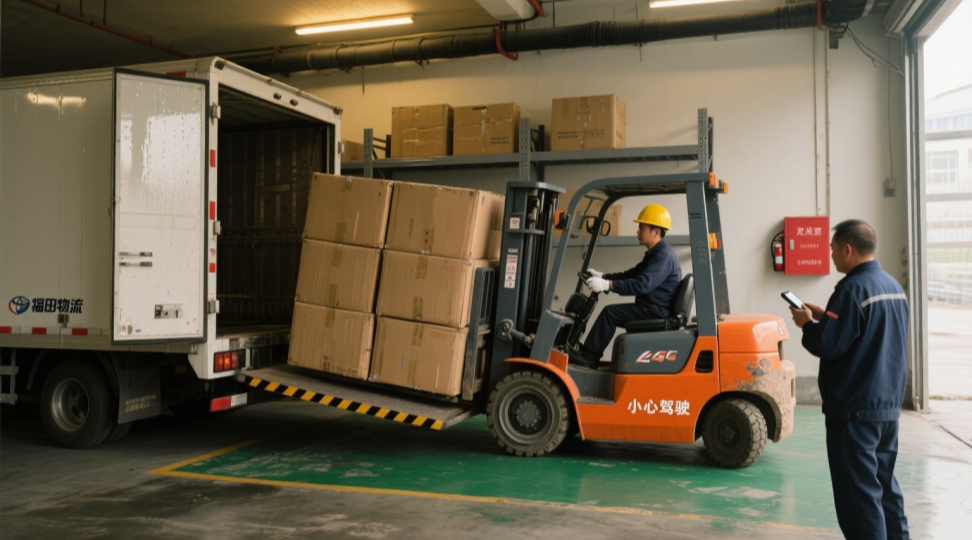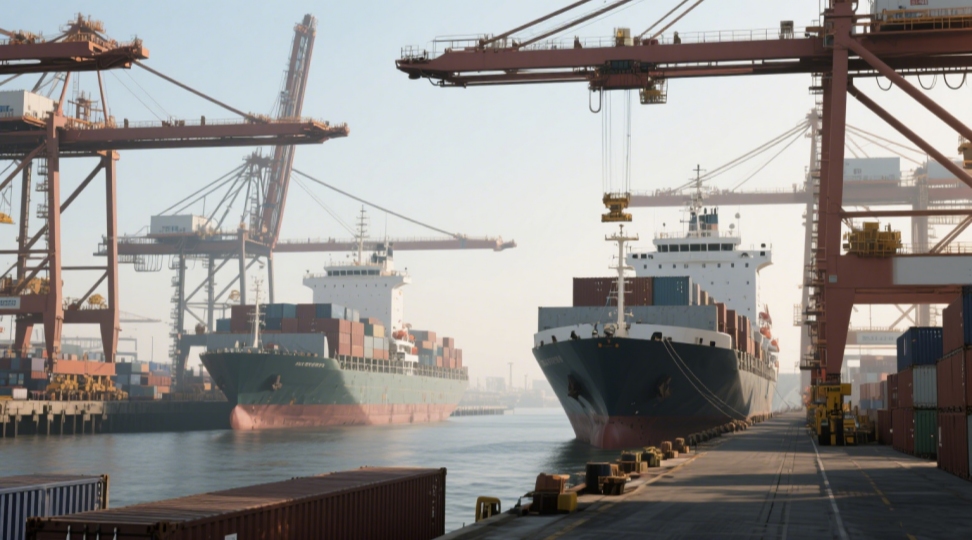Что такое код HS: принципы, применение и как избежать ошибок

The код ТН ВЭД (коды Гармонизированной системы) – это глобальная стандартизированная числовая классификация товаров, используемая в международной торговле. В сфере грузоперевозок и таможенного регулирования коды ГС действуют как «паспорт товара», информируя правительства о том, что это за товар. Всемирная таможенная организация (ВТамО) разрабатывает и поддерживает эту систему, присваивая каждому товару уникальный шестизначный код, идентифицирующий тип товара, например, оборудование, текстиль или продукты питания. Благодаря кодам ГС экспортеры и импортеры могут общаться на одном стандартном языке в разных странах, сокращая количество ошибок при таможенном оформлении, ускоряя таможенное оформление товаров и обеспечивая соблюдение правил импорта и экспорта различных стран.
Базовый код HS структура является систематическим. Каждый шестизначный код ТН ВЭД состоит из трёх частей: первые две цифры (раздел) обозначают общую категорию, следующие две (заголовок) сужают её, а последние две (подзаголовок) идентифицируют конкретный продукт. Например, код ТН ВЭД 090210 означает:
09 = Глава «Кофе, чай, мате и специи»
0902 = Заголовок «Чай»,
090210 = Подзаголовок для «Зеленый чай, неферментированный».
| Цифры | Сегмент | Пример (зеленый чай) |
|---|
| 2 | Глава | 09 – «Кофе и чай» |
| 4 | Заголовок | 0902 - "Чай" |
| 6 | Подзаголовок | 090210 – «Зеленый чай» |
Хотя первые 6 цифр являются международными, страны могут их расширять. Например, США добавляют дополнительные цифры, чтобы создать 10-значный код HTS (гармонизированный код). Тариф Расписание). Аналогично, Китайские коды ТН ВЭД включить больше цифр: Китай теперь использует 13-значный Формат (первые 8 цифр соответствуют тарифной сетке Китая, плюс 5 дополнительных цифр для таможенных процедур и досмотра). Эти расширения служат национальным потребностям (например, особым пошлинам или карантинным правилам), но шестизначная база остаётся единой во всём мире.

Почему коды HS важны
Коды ТН ВЭД играют ключевую роль в международной логистике и торговле. Таможня использует коды ТН ВЭД для классификации товаров, а тарифы, налоги и требуемая документация различаются в зависимости от товара. Например, таможенники по всему миру используют коды ТН ВЭД для определения ставок пошлин и необходимости получения лицензии. Точный код ТН ВЭД гарантирует, что ваши товары получат правильный тариф (включая ставки соглашений о свободной торговле) и обеспечит бесперебойное таможенное оформление.
Торговля и тарифы: Коды ГС напрямую влияют на ставки импортных пошлин. Использование точного кода может привести к снижению пошлин в соответствии с торговыми соглашениями. Неточные коды обычно приводят к повышению пошлин.
Согласие: Правительства используют коды ГС не только для установления тарифов, но и для обеспечения соблюдения торговой политики, квот и контроля за товарами, подлежащими ограничению ввоза. Таможня проверяет коды ГС на соответствие импортным и экспортным лицензиям, стандартам безопасности и правилам определения страны происхождения.
Документация: Код ТН ВЭД должен быть указан во всех товаросопроводительных документах (коммерческих счетах-фактурах, упаковочных листах, коносаментах, сертификатах происхождения). Он служит важным идентификатором груза.
Статистика и исследования: Компании и правительства используют коды ГС для сбора данных об импорте и экспорте. Вы можете импортировать данные на основе кодов ГС для анализа рынка. Аналитики рынка часто утверждают, что коды ГС играют ключевую роль в понимании тенденций торговли.
Эффективность логистики: Коды ГС помогают перевозчикам и экспедиторам организовывать перевозки. Например, перевозчики могут использовать коды ГС для сверки описаний грузов с манифестами, что помогает снизить вероятность ошибок при маршрутизации.
Короче говоря, коды ГС оптимизируют торговые процессы. Они обеспечивают единый язык, сокращают задержки на таможне, повышают точность тарифов и упрощают отслеживание грузов. Всемирная таможенная организация отмечает, что эта единая система экономит расходы за счёт гармонизации таможенных процедур во всём мире.
Последствия использования неправильных кодов ТН ВЭД
Использование неправильного кода ТН ВЭД может привести к серьёзным проблемам. Таможенные органы могут отклонить ваши документы, задержать товары или наложить штрафы. Неправильно классифицированные товары могут быть обложены налогом по неправильной ставке, что приведёт к недоплате или переплате.
Задержки и изъятия: Если таможня обнаружит неправильную классификацию ваших товаров, они могут быть задержаны или даже задержаны для проверки. Например, если импортер требует более точный 8-значный код ТН ВЭД, а вы предоставили только 6-значный, это может привести к задержкам в таможенном оформлении и дополнительным проверкам.
Штрафы и сборы: Неправильные коды часто приводят к занижению декларируемых пошлин. Это грозит штрафами или принудительной уплатой недоимки. В некоторых громких делах в США компании получали компенсации на десятки миллионов долларов из-за неправильной классификации.
Правовые/нормативные риски: Постоянные ошибки могут стать поводом для расследования несоблюдения компанией нормативных требований или даже контрабанды. В Китае неверные коды HS могут привести к снижению кредитного рейтинга компании или даже внести её в список государственного контроля.
Упущенная выгода: Использование менее специфичного кода может привести к тому, что ваши товары не будут подпадать под действие специальных тарифных программ. Например, вы можете упустить преференциальную ставку по торговому соглашению только потому, что код ТН ВЭД слишком общий.
Общий, «Если вы ошибётесь, вас могут ждать штрафы, проверки, задержки или более серьёзные последствия». Компании должны очень серьезно относиться к классификации HS.
Как избежать ошибок в кодах ТН ВЭД
Чтобы избежать дорогостоящих ошибок, следуйте этим рекомендациям:
Тщательно исследуйте: Используйте официальные инструменты классификации HS. Например, бесплатный инструмент Бюро переписи населения США. Поисковая система Расписания B Позволяет экспортерам искать коды ГС по описанию товара. База данных тарифных решений Таможенной службы США «CROSS» также может помочь в проверке сложных случаев. Во многих странах есть аналогичные онлайн-инструменты для поиска тарифов (тарифная база данных есть у Таможенной службы Китая, в ЕС — TARIC и т. д.).
Предоставьте четкие данные: Предоставьте как можно больше информации о вашем продукте (материал, применение, характеристики). Таможня классифицирует по подробные описания, поэтому неопределенные термины могут привести к ошибкам.
Дважды проверьте обновления: Коды ГС меняются примерно каждые 5 лет, когда ВТамО обновляет систему. Всегда используйте актуальную тарифную сетку. После пересмотра ГС могут применяться даже незначительные изменения кодов. Ознакомьтесь с действующими правилами или обратитесь к таможенному эксперту.
Проконсультируйтесь со специалистами: Работайте с опытными таможенными брокерами или экспедиторами. Например, команда DR Trans предлагает поддержку в оформлении таможенных деклараций в рамках наших услуг. Квалифицированный партнёр поможет вам использовать правильные коды и документацию.
Перекрестная проверка: В случае сомнений перепроверьте данные из нескольких источников. Например, убедитесь, что первые 6 цифр в тарифах разных стран (например, тариф HTS США, тариф Китая и т. д.) совпадают, поскольку магистральная сеть HS одна и та же. Это также решает проблему «Код HS против кода HTS» путаница: помните, что первые 6 цифр одинаковы во всем мире, но HTS страны добавляет дополнительные цифры.

Выполнив эти шаги, вы сведете к минимуму риск ошибок классификации. Как отмечается в одном из руководств по соблюдению нормативных требований: точная классификация имеет решающее значение - это «минимизирует задержки, снижает риск возникновения споров и помогает избежать штрафов».
Применение кодов ТН ВЭД
Коды HS используются во многих областях, помимо простой перевозки:
Таможня и тарифы: Очевидная область применения — назначение таможенных ставок и таможенное оформление. Для соответствия правилам импорта в каждой партии товара должен быть указан правильный код ТН ВЭД.
Торговая политика и контроль: Правительства используют коды ГС для применения торговых ограничений или квот на чувствительные категории товаров (например, оружие или опасные материалы). Они также применяют их для внедрения санитарных норм или правил контроля качества пищевых продуктов и растений.
Анализ рынка: Аналитики и компании используют торговые данные на основе HS для изучения рынков. Например, можно получить данные об импорте по коду ТН ВЭД Чтобы узнать, сколько товара поставляется в страну или из неё. Экспортёры часто изучают статистику по кодам ТН ВЭД, чтобы оценить спрос и конкуренцию.
Соблюдение нормативных требований: Ведомства отслеживают контролируемые товары (химикаты, фармацевтические препараты и т. д.) по их кодам ТН ВЭД. Экспортёры чувствительных товаров должны знать правильный код, чтобы соблюдать законы экспортного контроля.
Цепочка поставок и логистика: Экспедиторы и перевозчики группируют грузы по кодам ТН ВЭД для оптимизации перевозок. Коды ТН ВЭД также используются в системах торгового финансирования и страхования, основанных на классификации товаров.
Статистическая отчетность: Таможенные органы составляют национальную торговую статистику, используя коды ГС. Они используются в экономических отчётах, расчётах торгового баланса и принятии политических решений.
Во всех этих областях коды HS являются универсальный языкВТамО называет ГС «основой международной торговой классификации». Правильное использование ГС позволяет компаниям обеспечить единообразие в обращении с товарами по всему миру.
Как найти правильный код ТН ВЭД
Поиск правильного кода ТН ВЭД для конкретного продукта часто включает следующие шаги:
Посетите сайты таможни: Многие страны публикуют тарифные справочники онлайн. Например, как уже упоминалось, поиск по Приложению B США (census.gov/scheduleb) и база данных HTS доступны бесплатно. Сайт таможенной службы Китая также позволяет искать коды HS. Воспользуйтесь поиском по ключевому слову (название товара) на этих сайтах.
Используйте глобальные каталоги HS: Всемирная таможенная организация предоставляет инструменты (пояснительные записки к ГС и базу данных ГС) для официального руководства. Существуют также коммерческие поисковики и базы данных кодов ГС (часто доступные по подписке).
Проверьте описания продуктов: Тщательно сопоставляйте свой товар с заголовками разделов. Такие руководства, как «Примечания к разделам» ГС ВТамО или тарифные примечания для конкретных стран, помогут различать похожие товары.
Задайте вопрос экспортеру/импортеру: Если вы отправляете товар, у покупателя или продавца может быть уже указан используемый ими код ТН ВЭД. Просто убедитесь, что он верен для вашего товара.
Обратитесь за помощью к эксперту: Сложные продукты (смеси, механические комплекты и т. д.) могут потребовать профессиональной классификации. Логистические компании или таможенные брокеры могут классифицировать товары на основе технических паспортов.
Помните местные вариации: Если вы ведете торговлю с Китаем, используйте китайский формат. Китайский код ТН ВЭД Теперь коды состоят из 13 цифр (10 цифр плюс 3 для проверки). Всегда указывайте все необходимые национальные цифры при декларировании на этом рынке.
Перекрестная ссылка: Убедитесь, что первые 6 цифр совпадают во всех странах. Например, товар с 6-значным кодом HS 620312 (мужские хлопковые костюмы) будет иметь те же цифры на международном уровне, даже если HTS США добавит ещё 4 цифры.
Следуя этим методам, вы сможете найти код ТН ВЭД Достоверная информация. Например, если у вас возникнут затруднения, помните, что код ГС вам помогут найти «Поиск по Приложению B» переписи населения США и база данных Таможенного союза CROSS. Кроме того, экспедитор, такой как DR Trans, может проконсультировать вас по классификации в рамках наших услуг по таможенному оформлению.
Часто задаваемые вопросы
В: Что такое код HS и код HTS?
A: Коды HS являются 6-значный международный стандарт управляется Всемирной таможенной организацией. Коды HTS (Гармонизированный тарифный план) расширения для конкретных странНапример, в США для импорта используются 10-значные коды HTS (первые 6 цифр = код HS). Другими словами, Код HS и код HTS отличаются только дополнительными цифрами, которые страна добавляет для более подробной информации.
В: Насколько важно правильно указать код ТН ВЭД?
A: Очень важно! Неправильный код ТН ВЭД может привести к задержкам в доставке, дополнительным проверкам и увеличению расходов. Таможня может конфисковать товар или наложить штраф, если заподозрит неправильную классификацию. Всегда проверяйте информацию дважды, чтобы избежать подобных проблем.
В: Как мне найти правильный код ТН ВЭД для моего продукта?
A: Начните с официальных инструментов. Найдите нужный товар на сайте таможенных тарифов вашей страны (например, Приложение B переписи населения США или сайт тарифов Китая). Вы также можете ознакомиться с индексом кодов ТН ВЭД или обратиться за помощью к таможенному брокеру. Если у вас всё ещё остались сомнения, специалисты по таможенному оформлению DR Trans, такие как таможенные специалисты, помогут вам с классификацией и дадут ответы.
В: Если я экспортирую из Китая, какой код ТН ВЭД мне следует использовать?
A: Используйте китайский Формат кода ТН ВЭД. По состоянию на 2018 год в Китае используется 13-значная система (первые 8 цифр взяты из тарифной сетки Китая, а цифры с 9 по 13 отражают особенности таможенных/карантинных правил). При декларировании в Китае обязательно укажите все цифры.
В: Какую помощь DR Trans может оказать с кодами HS?
A: DR Trans — международный экспедитор с опытом работы с таможенными процедурами. Мы предлагаем комплексные логистические решения (рельс, грузовик, воздух, море), которые включают таможенное декларирование и таможенную очистку. Наша команда помогает клиентам разобраться с кодами ТН ВЭД, оформлением документов и соблюдением нормативных требований, обеспечивая бесперебойную доставку грузов.
Заключение
Система кодирования HS – основа глобальной классификации грузов. Важно обеспечить, чтобы каждый товар имел чёткий цифровой идентификатор при таможенном декларировании. Понимание значения кодов HS и принципов их работы поможет вам избежать проблем с тарифами и задержек. Убедитесь, что ваши товары имеют правильные коды HS, и будьте в курсе изменений в законодательстве. Если вам нужна более профессиональная команда для перевозки грузов, обратитесь в DR Trans International Logistics and Transport. Мы обладаем пятнадцатилетним опытом работы в сфере международной логистики и предлагаем такие услуги, как таможенное оформление, погрузка и разгрузка, и другие, гарантируя соответствие вашей международной торговли требованиям и эффективность.

















 IPv6 ПОДДЕРЖИВАЕТСЯ СЕТЬЮ
IPv6 ПОДДЕРЖИВАЕТСЯ СЕТЬЮ
